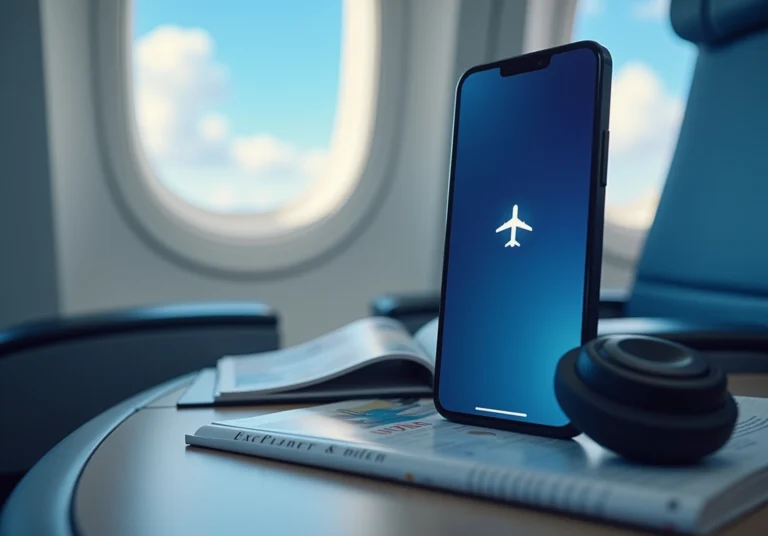Overview
Have you ever wondered why airplane mode is so important? Its primary purpose is to disable all wireless communications, helping to prevent any interference with aircraft systems. This ensures safety during your flights while also allowing you to dive into some offline activities!
The article dives into FAA regulations that require airplane mode during takeoff and landing. It also highlights some fantastic benefits, such as:
- Conserving battery life
- Reducing data usage
These little perks can really enhance your travel experience, making your journey smoother and more enjoyable. So next time you’re about to fly, remember to switch on airplane mode and embrace the adventure ahead!
Key Highlights:
- Aeroplane mode disables all wireless communications (cellular, Wi-Fi, Bluetooth) to prevent interference with aircraft systems, enhancing safety during flights.
- Enabling aeroplane mode allows users to engage in offline activities like listening to music, playing games, or reading e-books.
- About 70% of travellers activate aeroplane mode during flights to manage data usage and avoid roaming charges.
- The FAA mandates the use of aeroplane mode during takeoff and landing to mitigate risks of electronic interference with navigation systems.
- Studies show that mobile devices can disrupt critical cockpit instruments, which is why regulations are in place.
- Aeroplane mode can extend battery life by halting energy drain from maintaining network connexions.
- Travellers can still access downloaded content while in aeroplane mode, promoting a distraction-free environment.
- The concept of aeroplane mode emerged in the late 20th century as mobile technology grew, balancing connectivity with safety.
- Different devices have varying features for aeroplane mode; iOS allows quick access, while Android offers customization options.
- Using aeroplane mode can enhance device performance and security by reducing the risk of unauthorised access.
Introduction
Airplane mode has truly become an essential tool for modern travelers, effortlessly combining safety with convenience! By turning off wireless communications, it not only follows aviation regulations but also makes your travel experience even better—think extended battery life and less data usage. But as mobile technology keeps evolving, you might wonder: how can you make the most of airplane mode while sticking to important safety protocols? Let’s dive into the purpose and functionality of airplane mode and discover its vital role in today’s air travel, along with all the ways it can enhance your journey!
Define Airplane Mode: Functionality and Features
The airplane setting is such a handy feature on your mobile devices! It turns off all wireless communication functions—think cellular, Wi-Fi, and Bluetooth—to keep everything running smoothly. This feature is primarily designed for the airplane mode purpose of preventing any interference with aircraft navigation systems during flights, helping to ensure safety in the skies. When you enable flight mode, you can still enjoy offline activities like listening to music, playing games, or diving into e-books—all while sticking to airline rules!
Now, the way flight mode operates can vary a bit from one gadget to another, but the airplane mode purpose remains the same: to allow for secure travel without sacrificing usability for those non-communication activities. For instance, did you know that turning on flight mode can actually extend your battery life? It stops that constant energy drain from maintaining network connections. Plus, it’s a quick fix for any network connectivity issues, letting your device reconnect to available networks with ease.
Statistics reveal that about seventy percent of travelers activate flight settings during their flights. They recognize the perks of managing data usage and avoiding unexpected roaming fees while abroad. Experts in mobile technology also emphasize that using flight mode not only boosts your device’s performance but also adds an extra layer of data protection by reducing the risk of unauthorized access. For example, it helps prevent those automatic connections to international networks, which can save you from those dreaded high roaming charges!
All in all, the purpose of airplane mode is an essential tool for today’s travelers. It strikes a perfect balance between safety and functionality, making your journey that much smoother.
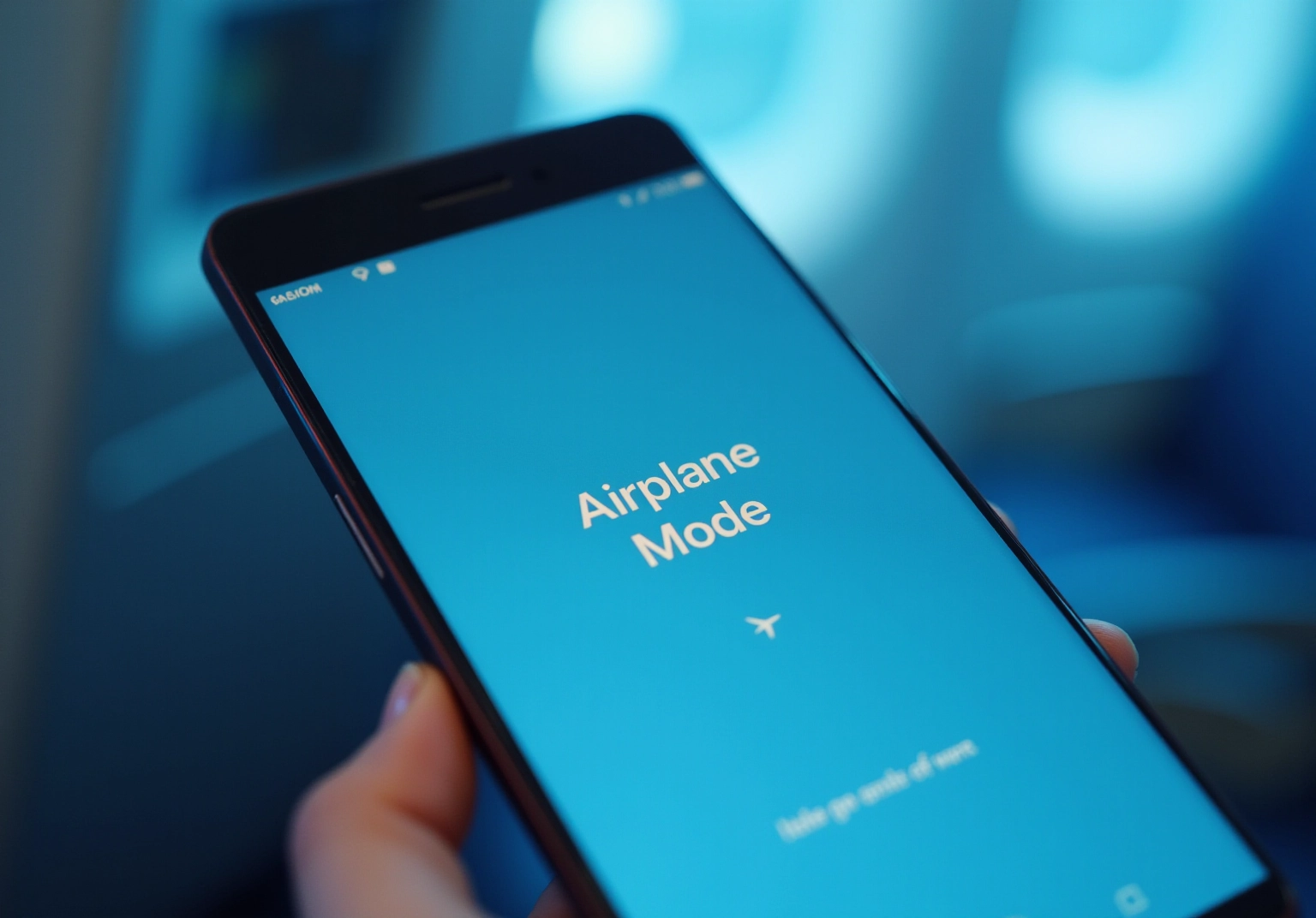
Context of Airplane Mode: Why It Is Required During Flights
Flight settings are super important during your journeys! They help prevent electronic gadgets from causing disruptions to aircraft communication and navigation systems. The Federal Aviation Administration (FAA) requires passengers to disable wireless communications to keep everyone safe, especially during takeoff and landing. While modern aircraft are designed to withstand interference, these regulations are still in place as a precautionary measure. Did you know that studies have shown that cell phones can interfere with critical cockpit instruments, including GPS receivers that are vital for safe landings? Plus, with the rollout of 5G technology, there are growing concerns about potential interference with radio altimeters, which are essential for determining an aircraft’s height—especially in low visibility conditions. A commercial pilot once mentioned that if a passenger’s 5G-capable device is left on, it could send out a spurious signal leading to incorrect height indications, which is a serious safety risk during landing!
Many airlines are now changing their policies, allowing the use of Wi-Fi and Bluetooth once flight settings are activated. This shift reflects the changing landscape of in-flight connectivity while still keeping safety regulations in mind. On top of that, cell phones not in flight setting can overwhelm ground networks, particularly during takeoff and landing. This highlights just how important it is to activate settings for the airplane mode purpose! Not only does it keep everyone safe, but the airplane mode purpose also helps to save battery life since constantly searching for signals can really drain your power.
And here’s a little tip: when you activate flight setting, you can still access saved information like downloaded text messages, documents, games, music, and films. So, you can enjoy your gadgets without needing to connect to cellular networks!
Overall, following the device settings regulations leads to a more enjoyable journey for everyone on board. It’s a simple gesture of respect that enhances the travel experience. As the rules around mobile device usage continue to evolve, it’s essential for you to stay informed and follow the crew’s guidance regarding device settings.

Origin of Airplane Mode: Evolution of Mobile Connectivity
The concept of flight settings emerged alongside the rise of mobile technology in the late 20th century. As mobile phones became part of our daily lives, concerns about their effects on aviation safety led regulatory bodies to establish guidelines for their use during flights. By the early 2000s, the introduction of flight settings with airplane mode purpose allowed you to easily deactivate wireless features without needing to power down your device completely. This innovation represented a growing awareness of the need for connectivity while still addressing safety concerns, paving the way for a modern travel experience where you can enjoy both safety and convenience.
Interestingly, a 2017 survey revealed that 40% of people don’t always activate their phones’ flight settings. This statistic highlights just how crucial this feature is for adhering to aviation regulations. Additionally, the evolution of rules—like China’s past ban on cell phone use during flights—shows how we’ve been adapting to integrate mobile technology into aviation.
Today, the airplane mode purpose serves as an essential function that balances the need for safety with the desire for connectivity. They allow travelers to enjoy a smooth journey while following aviation regulations. Plus, using travel apps like Allyz can further enhance your travel experience by providing access to insurance protection and emergency support. It’s a great reminder of the practical advantages that flight settings offer in today’s travel landscape!
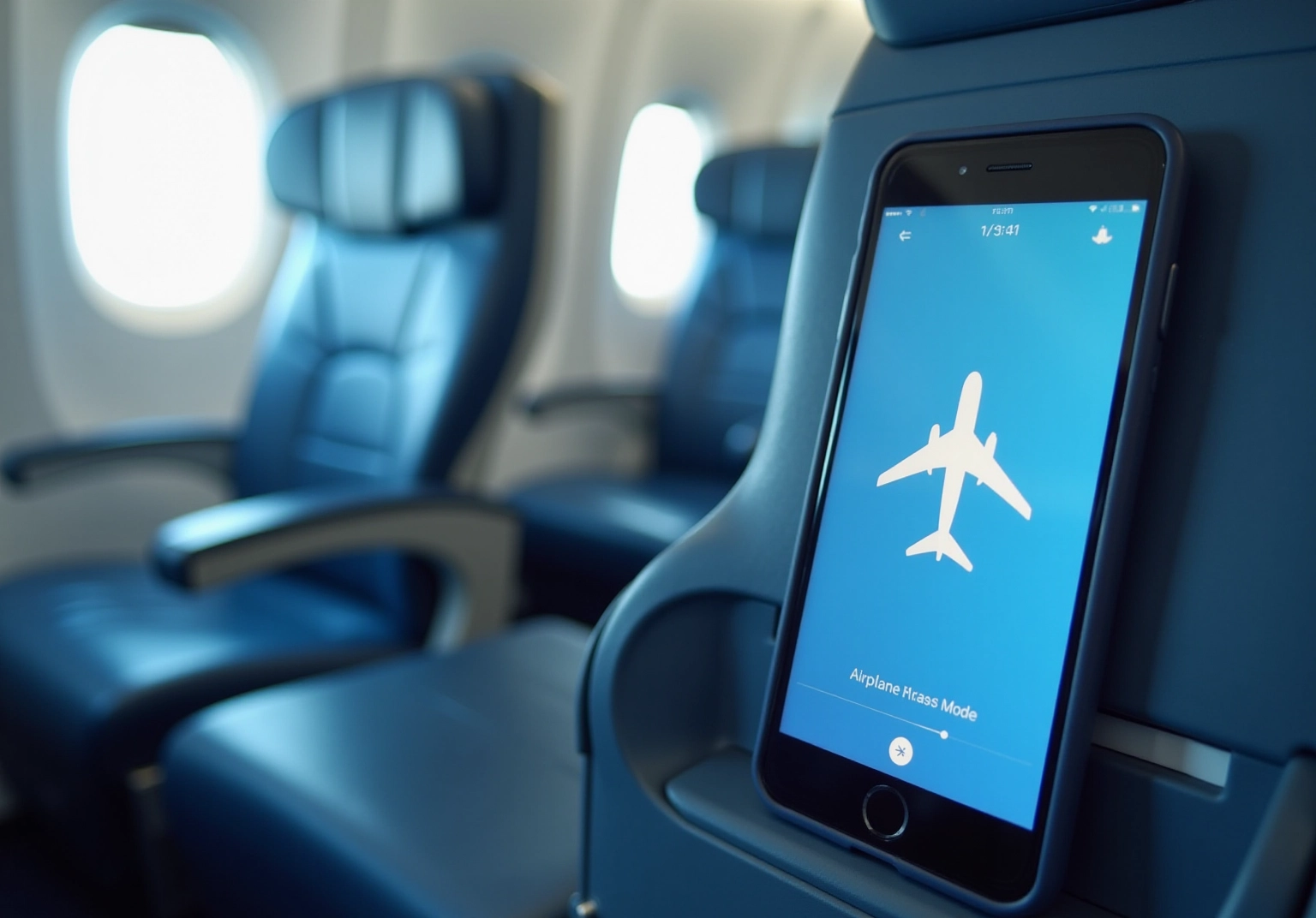
Key Characteristics and Benefits of Airplane Mode
When it comes to flight settings, one essential trait is the ability to turn off all wireless communications while still enjoying offline functionalities. However, the airplane mode purpose extends far beyond merely adhering to airline rules! They can help you save battery life, reduce data consumption, and minimize distractions while you travel.
Imagine this: you download your favorite movies or music before your flight, allowing you to enjoy them offline without worrying about draining your battery or racking up roaming charges. Statistics show that enabling flight settings can lead to a significant drop in data usage since it prevents apps from accessing mobile data. Plus, it can really speed up your charging time by focusing solely on charging without interruptions!
And let’s not forget the peace of mind it brings. By creating a distraction-free environment, flight settings can enhance your focus and tranquility during your journey. It’s like a little digital detox that lets you appreciate the adventure ahead. Travel experts recommend using flight settings, highlighting the airplane mode purpose, as airlines ask passengers to activate these settings to prevent signal interference onboard. This highlights how important it is for fostering mindfulness and reducing stress while traveling.
Of course, it’s also crucial to follow FAA regulations, which require the use of flight settings, specifically for airplane mode purpose, during flights to ensure everyone’s safety. The good news? You can still connect to Wi-Fi while in flight settings, giving you access to the internet without incurring those pesky international roaming fees. So, next time you fly, remember to embrace the power of flight settings and enjoy your journey to the fullest!
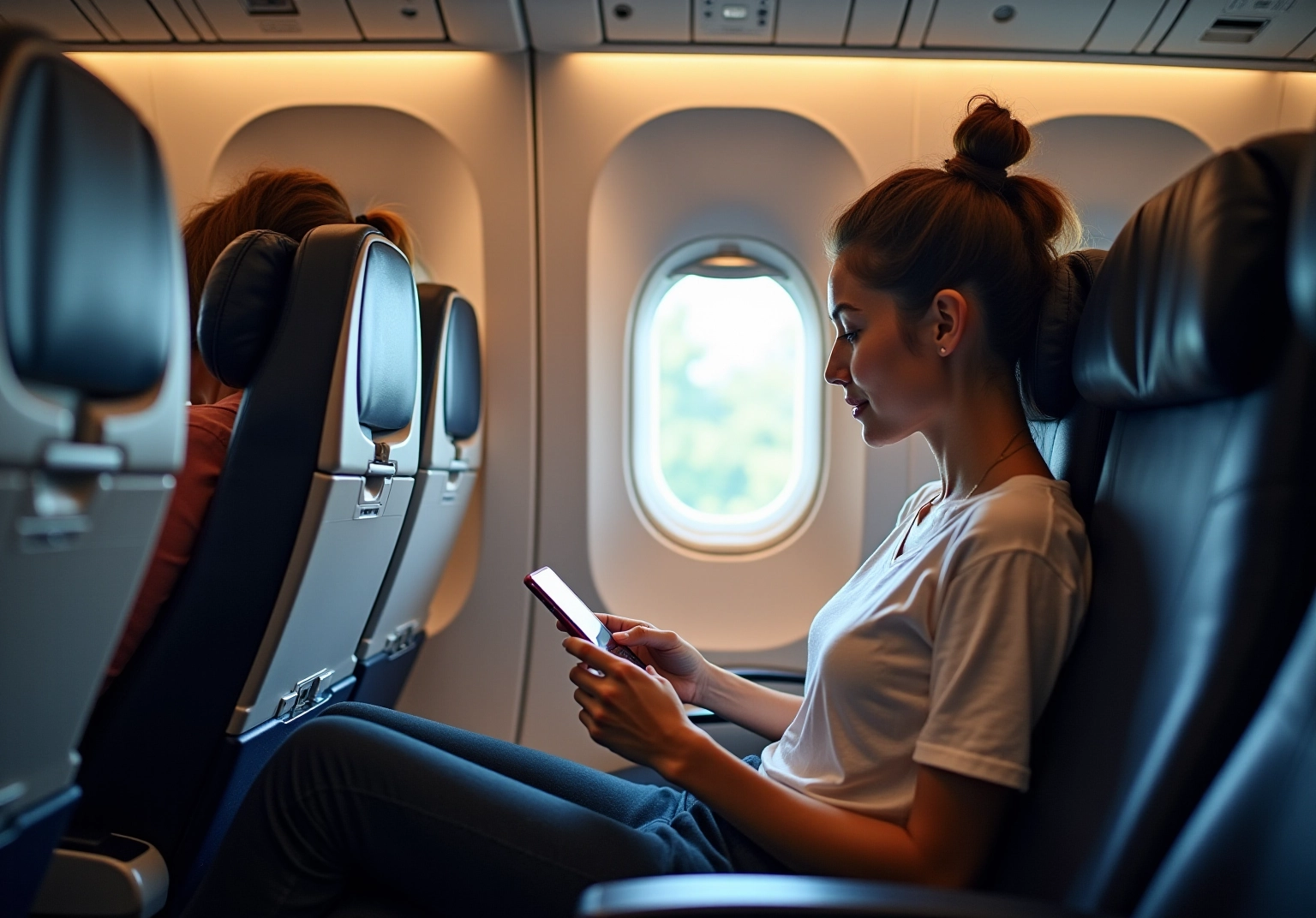
Variations of Airplane Mode: Device-Specific Features
The airplane mode purpose reveals some interesting differences among various gadgets and operating systems, which can really impact your experience and functionality! For instance, on iOS devices, you can easily switch the flight setting right from the control center—talk about quick access!
On the flip side, Android devices often provide extra customization options, allowing you to selectively activate features like Wi-Fi or Bluetooth while in flight mode. This flexibility is especially handy for travelers who want to stay connected without breaking any airline rules. Did you know that while in flight mode, iPhone users can send messages through Wi-Fi using apps like iMessage? Android users might have similar features, depending on their setup.
However, it’s crucial to remember that the airplane mode purpose is to disable your device’s ability to connect to cellular networks, which makes communication through calls or texts impossible. Plus, turning on airplane mode in crowded areas can significantly reduce the risk of cyber threats and digital fraud, making it a must-have feature for security-conscious travelers.
Understanding these distinctions not only helps you optimize your device usage but also ensures you stay compliant with airline regulations. Ultimately, this knowledge contributes to a smoother travel experience, allowing you to focus on your adventures ahead!
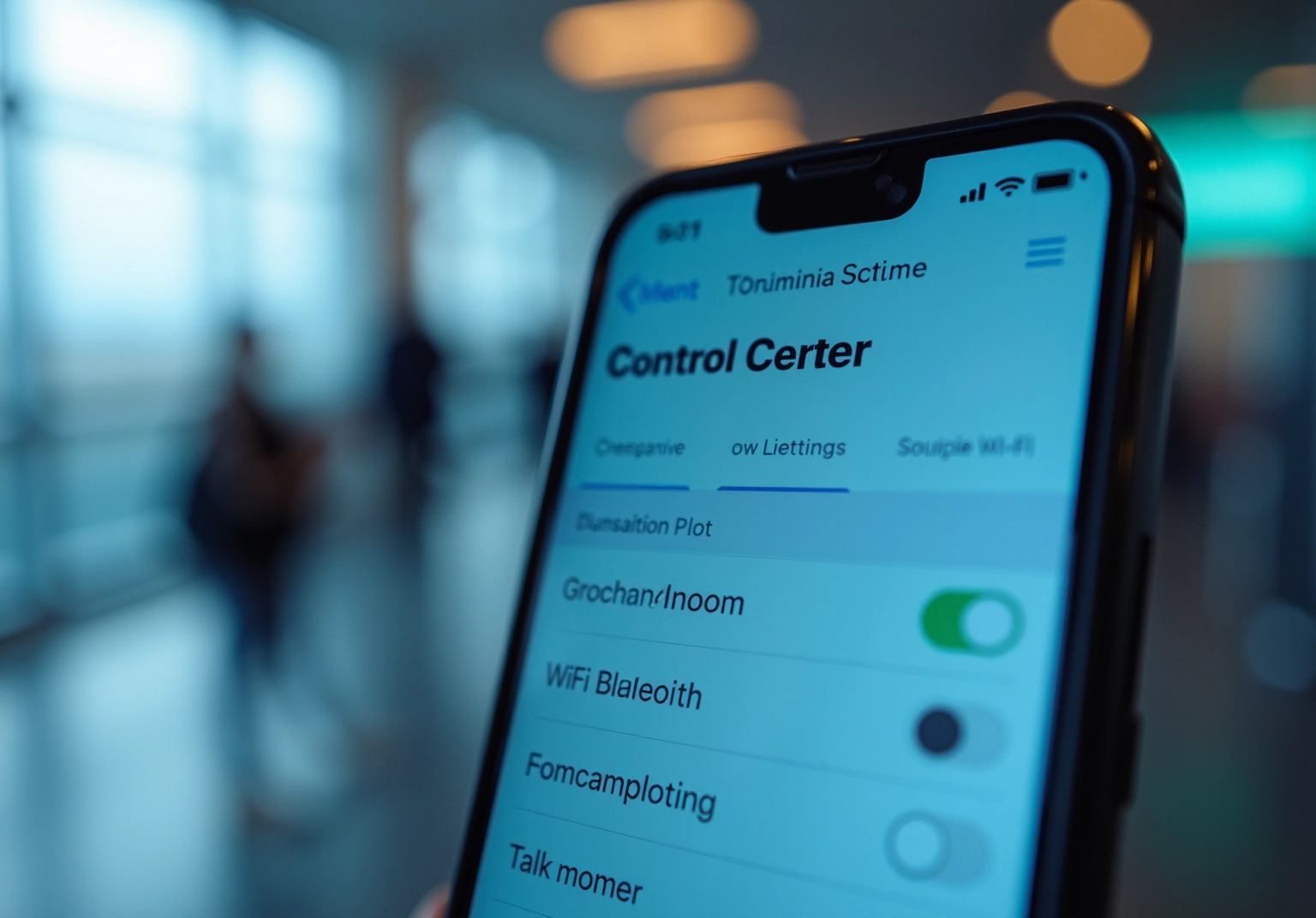
Conclusion
The airplane mode feature plays a crucial role in modern mobile devices, ensuring safety during flights while allowing you to enjoy some functionality. By disabling all wireless communications, it not only meets aviation regulations but also enhances your travel experience by enabling offline activities and conserving battery life. Understanding its significance goes beyond mere compliance; it reflects a balance between connectivity and safety, which is essential for today’s travelers.
Throughout this article, we’ve highlighted key insights into the various functionalities and benefits of airplane mode. It:
- Prevents interference with aircraft systems
- Extends battery life
- Reduces data usage
- Minimizes distractions
Plus, the evolution of mobile technology and the corresponding regulations underscore the importance of this feature in creating a safe travel environment. The adaptability of airplane mode across different devices further enhances its usability, allowing you to customize your experience while staying compliant.
Ultimately, embracing airplane mode not only contributes to your personal convenience but also plays a vital role in ensuring the safety and efficiency of air travel. As technology continues to evolve, staying informed about device settings and their implications will empower you to navigate your journeys with confidence and ease. So, the next time you prepare for a flight, remember the essential purpose of airplane mode—it’s not just a rule; it’s a tool for a smoother, safer travel experience!
Frequently Asked Questions
What is airplane mode and what does it do?
Airplane mode is a feature on mobile devices that turns off all wireless communication functions, including cellular, Wi-Fi, and Bluetooth. It is designed to prevent interference with aircraft navigation systems during flights, ensuring safety in the skies.
Can I use my device for activities while in airplane mode?
Yes, you can still enjoy offline activities such as listening to music, playing games, or reading e-books while in airplane mode.
How does airplane mode affect battery life?
Enabling airplane mode can extend battery life by stopping the constant energy drain from maintaining network connections.
Why is airplane mode required during flights?
Airplane mode is required to prevent electronic devices from disrupting aircraft communication and navigation systems, particularly during takeoff and landing as a precautionary measure.
What are the potential risks of not using airplane mode during a flight?
Not using airplane mode can lead to interference with critical cockpit instruments, including GPS receivers, and may result in incorrect height indications during landing, posing serious safety risks.
Are there any changes in airline policies regarding the use of devices during flights?
Many airlines are now allowing the use of Wi-Fi and Bluetooth once airplane mode is activated, reflecting the evolving landscape of in-flight connectivity while maintaining safety regulations.
What happens to my device if I don’t activate airplane mode?
If airplane mode is not activated, devices can overwhelm ground networks, especially during takeoff and landing, and can also lead to unauthorized connections to international networks, resulting in high roaming charges.
Can I access saved information while in airplane mode?
Yes, while in airplane mode, you can still access saved information such as downloaded text messages, documents, games, music, and films without needing to connect to cellular networks.
Why is it important to follow device settings regulations during flights?
Following device settings regulations enhances the travel experience for everyone on board and is a simple gesture of respect that contributes to safety and smooth operations during the flight.









